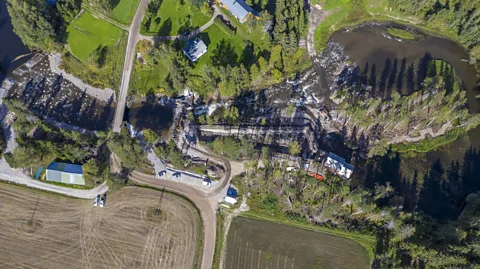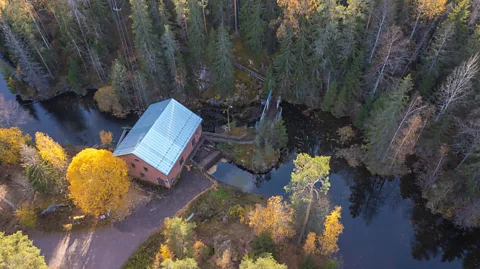Why Europe is dismantling its dams
 Mikko Nikkinen / Storymakers 2021
Mikko Nikkinen / Storymakers 2021Artificial barriers have long blocked Europe's waterways. But as many of these structures age, a movement is growing to let rivers flow freely once again.
Three years ago, when construction workers started demolishing a series of dams on the Hiitolanjoki River in Finland, they were greatly surprised to spot a run of salmon. Part of the country's last wild and landlocked population, the fish were returning to the river after years of absence. For Pauliina Louhi, it was a sign that the ecosystem's recovery had begun.
"It was not only adults – there were many salmon juveniles," Louhi, an ecologist at Natural Resources Institute Finland, a Finnish research organisation, recounts enthusiastically. "They had already been spawning on the lowermost part of the river. When I saw how the site looked after the dam removal, I actually had tears in my eyes."
The river used to be a key migration route for the endangered freshwater salmon from Lake Ladoga, in nearby Russia, to Finland. But between 1911 and 1925 the introduction of three dams supplying hydroelectric energy created barriers between the salmon and their spawning grounds. The salmon and other fish, like brown trout, were trapped on the Finnish side of the river, which remained fragmented for 100 years.
Today, however, with the dams removed, the water runs freely once again through newly built rapids surrounded by tall trees. Every time a dam was removed, salmon "embraced" the new part of the river, says Hanna Ollikainen, executive director of the South Karelian Recreation Area Foundation, a civil society organisation, which acquired the dams and is responsible for the environmental and touristic development of the area. In 2021, after the first removal, five spawning nests were spotted; in autumn 2022, one year on, baby salmon reached a record-breaking number of 200 fish per acre (0.4 hectares). When the removal of the upmost dam, Ritakoski, was completed in December 2023, they found a free age to the upper parts of the river and its tributaries.
The removal of the three dams was the result of decades of work, which took into consideration not only the health of the river, but also the economic context, says Ollikainen. Evaluations concluded that their electricity production had become unprofitable for the power plant owners – especially when the costs of maintenance and mandatory environmental protections, such as fish-ladder introductions, were taken into , Ollikainen says. So the dams were sold and dismantled.
 Mikko Nikkinen / Storymakers
Mikko Nikkinen / StorymakersThe decommissioning of the three Finnish dams is not an isolated case, however. Across Europe, many dams are either approaching the end of their operational life, or the costs of their maintenance are outweighing the benefits they provide. Similarly, in the United States, many are due to be re-licensed, sparking discussions about whether they are still fit to yield services. And it is not just big dams: millions of small barriers block European rivers.
Until recently, a comprehensive assessment of the extent of river fragmentation in Europe was lacking. But now it exists, the case for dam removal has been building.
A dam big problem
Rivers in highly industrialised areas, such as in Europe and the US, have been heavily modified for centuries, from road-crossings and water extraction for agriculture, to the addition of low barriers such as weirs, culverts, water mills and hydroelectricity. Just over a third of the world's rivers longer than 1,000 km (621 miles) still remain free-flowing over their entire length, according to estimates by researchers.
